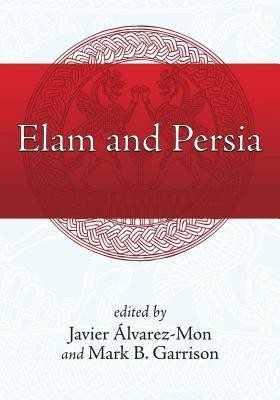
- We will send in 10–14 business days.
- Publisher: Eisenbrauns
- Year: 2011
- Pages: 512
- ISBN-10: 157506166X
- ISBN-13: 9781575061665
- Format: 17.8 x 25.4 x 2.9 cm, hardcover
- Language: English
- SAVE -10% with code: EXTRA
Elam and Persia (e-book) (used book) | bookbook.eu
Reviews
Description
The late 7th and 6th centuries B.C. were a period of tremendous upheaval and change in ancient western Asia, marked by the destruction of the Assyrian Empire, the rise and collapse of the Neo-Babylonian state, and the stunning ascent of what was to become the Achaemenid Persian Empire, the largest polity the world had yet seen. Of the major cultural entities involved in these far-reaching events, Elam has long remained the least understood. The essays contained in this book are part of a continuing reassessment of the nature and significance of Elam in the early 1st millennium B.C., with a focus on the relationship between "Elamite" culture of the Neo-Elamite period and the emerging "Persian" culture in southwestern Iran in the 7th and 6th centuries B.C.
The conception of this volume goes back to the 2003 meeting of the American Schools of Oriental Research that took place in Philadelphia, Pennsylvania, where two sessions were dedicated to the rich cultural heritage of ancient Iran. It was also the first time that Iranian archaeology was represented at ASOR since the Iranian Revolution. This volume contains 14 contributions by leading scholars in the discipline, organized into 3 sections: archaeology, texts, and images (art history).
The volume is richly illustrated with more than 200 drawings and photographs.
EXTRA 10 % discount with code: EXTRA
The promotion ends in 21d.00:32:37
The discount code is valid when purchasing from 10 €. Discounts do not stack.
- Publisher: Eisenbrauns
- Year: 2011
- Pages: 512
- ISBN-10: 157506166X
- ISBN-13: 9781575061665
- Format: 17.8 x 25.4 x 2.9 cm, hardcover
- Language: English English
The late 7th and 6th centuries B.C. were a period of tremendous upheaval and change in ancient western Asia, marked by the destruction of the Assyrian Empire, the rise and collapse of the Neo-Babylonian state, and the stunning ascent of what was to become the Achaemenid Persian Empire, the largest polity the world had yet seen. Of the major cultural entities involved in these far-reaching events, Elam has long remained the least understood. The essays contained in this book are part of a continuing reassessment of the nature and significance of Elam in the early 1st millennium B.C., with a focus on the relationship between "Elamite" culture of the Neo-Elamite period and the emerging "Persian" culture in southwestern Iran in the 7th and 6th centuries B.C.
The conception of this volume goes back to the 2003 meeting of the American Schools of Oriental Research that took place in Philadelphia, Pennsylvania, where two sessions were dedicated to the rich cultural heritage of ancient Iran. It was also the first time that Iranian archaeology was represented at ASOR since the Iranian Revolution. This volume contains 14 contributions by leading scholars in the discipline, organized into 3 sections: archaeology, texts, and images (art history).
The volume is richly illustrated with more than 200 drawings and photographs.


Reviews